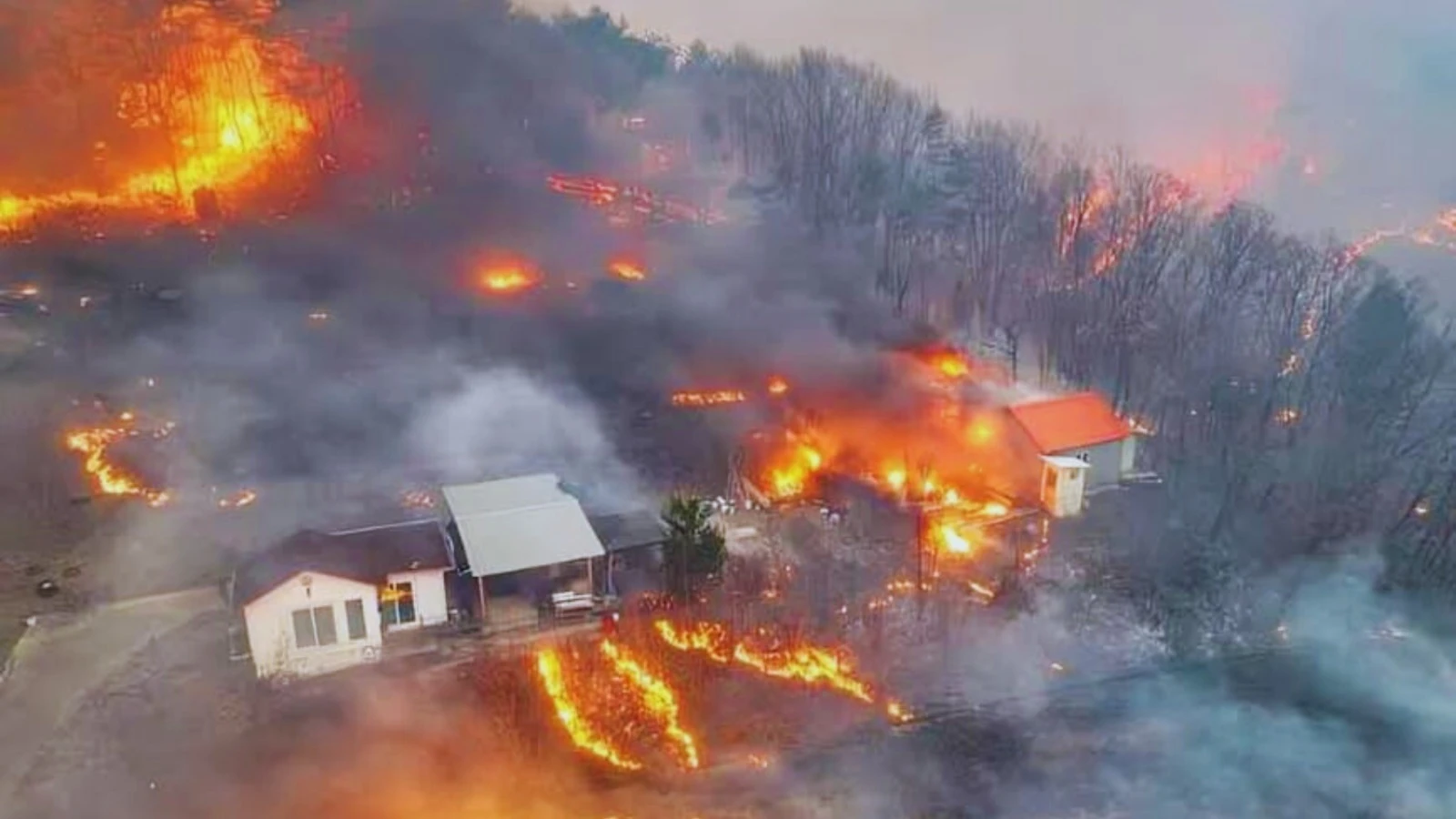Seoul: At least 18 people have lost their lives as multiple wildfires continue to sweep through South Korea's southeastern region, marking one of the country's most severe forest fires in decades. Thousands of firefighters, assisted by military forces, are working tirelessly to contain the fast-spreading blazes.
The fires, fueled by strong winds and dry weather, have rapidly engulfed entire neighborhoods, leading to mass evacuations. Over 27,000 residents have been forced to flee, and authorities have transferred hundreds of inmates from local prisons for safety. Schools in the affected regions have also been shut down.
"We are deploying all available personnel and resources to tackle the most severe wildfires we have faced, but the situation remains critical," Acting President Han Duck-soo stated. The U.S. military stationed in South Korea has joined efforts to control the fires.
According to the Safety Ministry, as of early Wednesday morning (5 a.m. local time, 2100 GMT), 14 people had died in the Uiseong County fire, while four others lost their lives in Sancheong County. Many victims were elderly, primarily in their 60s and 70s, police reported.
The fire in Uiseong remains only 68% contained, spreading at an alarming rate due to strong winds. Lee Byung-doo, a forest disaster expert at the National Institute of Forest Science, described its scale as "unimaginable." Weather conditions are expected to remain dry in the affected regions, raising concerns about further destruction.
Experts warn that climate change is contributing to the increasing frequency of wildfires worldwide. Lee pointed to unusual fire outbreaks in Los Angeles earlier this year and a recent wildfire in northeast Japan as indicators of this growing trend. "We must acknowledge that large-scale wildfires will become more common, and we need better resources and trained personnel to respond effectively," he said.
South Korea primarily relies on helicopters to combat wildfires due to its mountainous terrain. However, Lee emphasized the need for additional fire-fighting aircraft and drones capable of operating at night.
Efforts to battle the fires suffered a setback on Wednesday when a fire-fighting helicopter crashed while attempting to douse the flames. The pilot was killed in the crash, and the Korea Forest Service has since grounded all its helicopters. Officials are investigating the cause of the accident.
The agency has been facing challenges with its fleet of 48 Russian helicopters, as sanctions against Russia have prevented the import of essential parts, leaving eight aircraft grounded since last year. In response to criticism over equipment shortages, Korea Forest Service spokesperson Kim Jong-gun announced plans to acquire more helicopters for wildfire response.
Currently, nearly 5,000 personnel, including firefighters, police officers, and military units, are engaged in fire-fighting operations. Authorities are also deploying 87 helicopters in an attempt to bring the blazes under control.
Since igniting on Saturday in Uiseong, the wildfires have devastated historic landmarks, including the ancient Goun Temple, which dates back to 681. Officials are now working to protect UNESCO World Heritage sites such as Hahoe Village and the Byeongsan Confucian Academy in Andong by spraying fire retardants.
The South Korean government has designated the affected areas as special disaster zones. So far, the fires have destroyed over 15,000 hectares (37,065 acres) of land, leaving a trail of devastation in their wake.








